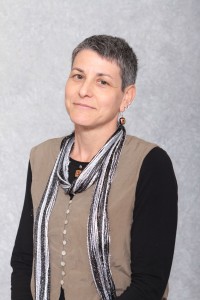
Nearly 25 years ago, the Autism Society launched a nationwide effort to promote autism awareness, inclusion and self-determination for all. Its purpose was to assure the people with Autism Spectrum Disorder had the opportunity to achieve the highest possible quality of life. Autism spectrum disorder (ASD) is a developmental disability that can cause significant social, communication and behavioral challenges. They affect people in different ways and can range from mild to severe, according to the U.S. Centers for Disease Control & Prevention (CDC). CDC data (2012) reports the number of diagnosed cases has risen 300 percent over the past 11 years. Additionally, one in 50 children in the Unites States has an ASD and interestingly, boys out number girls 5:1 in the diagnosis of ASD. No doubt, autism rates throughout the country have surged since the 1980’s and this has been especially prevalent in California. According to the California Department of Developmental Services (DDS) there has been explosive growth of autism spectrum disorders (ASD) since 1995 in California. The vast majority of ASD cases, about 85%, are under the age of 25, with only about 7% over age 31. A staggering 5,000-6,000 cases of ASD are diagnosed each year in California, with about 70% of a severity warranting eligibility for Regional Center services. Many causes of autism have been proposed. Genetic factors predominate the research and some genes have been identified that are linked to autism. The reoccurrence rate in siblings is approximately 18% but in males with an affected sibling it can be as high as 25%. Early identification and treatment is key to families and individuals with ASD. First know the signs: Signs of autism
- Delay in learning to talk or not talking at all
- Not responding to their name by 12 months
- May appear to be deaf at times but respond to unusual sounds
- Not pointing to objects or showing interest in sharing by 15 months
- Does not engage in pretend play by 18 months
- Lines up toys or uses them in an unusual way
- Avoids eye contact and wants to be alone
- Repeats words or phrases from others or out of context (repeats lines from movies)
- Uses a monotone intonation when talking
- Gets upset over minor changes (routines, change clothing, move furniture)
- Has an obsessive interest in an object or topic
- Will tantrum when denied access to obsession
- Moves body in usual way (flapping hands, rocking, spins in circles)
- Not reassured or able to calm down through holding or cuddling
- Is calmed by deep pressure from an object, seeks comfort under heavy weights
- Unusual response to sensory input (touch, smell, taste)
- Screaming when wash hair, no tags in clothes, reacts to seams in clothing prefers foods of certain texture or color, reacts to smells either avoids or seeks out certain smells.
If you’re a parent of a newly diagnosed child, here are 11 tips to help:
- It’s a marathon so breathe deeply, take steps, and set goals
- The internet has lots of misinformation get hooked up with a local parent ASD support group (e.g., Parents Helping Parents http://www.php.com/)
- Find parents that have older children with ASD they know the ropes and can guide you around pitfalls.
- Good intervention services are costly. Seek funding through insurance (cover Applied behavior analysis), Regional Center, or look to crowd funding sites. Be creative.
- Make sure you family and community know your child. Take him/her out often and everywhere.
- Did I mention breathe!
- Create schedules with visuals using pictures (Google images) or Apps on your smart phone. On your phone set reminders, alarms, use notes, games and applications can be lifesavers.
- Learn all you can about autism, teach your family and supports about autism.
- Learn what calms and regulates your child’s sensory system.
- Learn about and seek services in Applied Behavior Analysis (ABA)
- Calm yourself
There are also treatment resources for ASD
- ABA is the most widely accepted and documented effective method for educating and treating ASD.
- Seek board certified behavior analysts to provide the services to your child. See the web site for certified local providers (http://info.bacb.com/o.php?page=100155) http://www.apbahome.net/
- Ask local ABA providers if they take insurance, have BACB certified supervisors, all tutors are Registered Behavior Technicians.
- Ask for data on their outcomes for students.
- Sample of local providers:
http://www.gatewaylg.com/ http://www.bia4autism.org/ http://steconsultants.com/ Touro University California has responded to this growing need for highly qualified BCBAs that know ASD by offering a Master of Arts degree in Applied Behavior Analysis. This program trains teachers, educators, school psychologists or those seeking knowledge of ABA and ASD. The program is specifically designed for those working in school districts or homes during the day with evening classes onsite in Vallejo Mare Island campus. If you are interested in getting more information look at http://cehs.tu.edu/gsoe/credentialprogs/ABAprogram.html Applications and resources for ASD New and useful Apps for the students with autism: For behavior
- Autism Tracker Pro https://itunes.apple.com/us/app/autism-tracker-pro-track-analyze/id478225574?mt=8
- iRewardChart http://appcrawlr.com/ios/irewardchart-parents-reward-tra
- Behavior Tracker Pro https://itunes.apple.com/us/app/behavior-tracker-pro/id319708933?mt=8
- Time Timer Visual app https://itunes.apple.com/us/app/time-timer/id332520417?mt=8
- First then visual schedules https://itunes.apple.com/us/app/first-then-visual-schedule/id355527801?mt=8
- Too Noisy (visual feedback for classroom) http://toonoisyapp.com/
For Social Skills
- Conversation Builder https://itunes.apple.com/us/app/conversationbuilder/id413939366?mt=8
- Social Skills Builder http://www.friendshipcircle.org/apps/browse/social-skill-bulder-app-full/
- Pictello https://www.assistiveware.com/product/pictello
- Resource
Parenting, autism and geekery http://www.squidalicious.com/ http://www.thinkingautismguide.com/  Linda Haymes is an Assistant Professor of Special Education in the Graduate School of Education at Touro University California.
Linda Haymes is an Assistant Professor of Special Education in the Graduate School of Education at Touro University California.














































